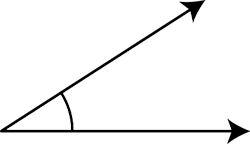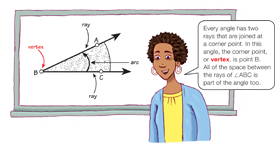|
|
Daily Practice and Problems |
Lesson |
Homework |
Assessment |
Student Books |
Student Guide |
|
|
|
|
| Student Activity Book |
|
|
|
|
Teacher Resources |
Teacher Guide - digital |
|
|
|
|
Supplies for Students
envelope
scissors
ruler
straws (inflexible, 10 per student)
paper clips or pieces of chenille stems (5 per student)
Materials for the Teacher
chart paper
scissors
ruler
straws (inflexible, 6)
paper clips (2) or pieces of chenille stems (2)
Unit 9 Assessment Record
Math Facts Class Record
Materials Preparation
Cut Out Angle Cards. Cut out (or have student volunteers cut out) the Angle Sort Cards in the Student Activity Book and place them in envelopes in advance. Students will use these cards again in Lesson 4.
Make an Angle. Assemble an angle from two drinking straws and a paper clip or a piece of a chenille stem. Drinking straws should not be flexible. See Figure 1 in Part 2 of the lesson for tips on assembling the angles.
Geometry Word Chart. Prepare an area in your room for a Geometry Word Chart. The chart will be used to record students' vocabulary definitions. In Lesson 1, you will likely need two or three sheets of chart paper. On the first sheet, write the title “Geometry Word Chart” in large letters. Expect the size of the chart, and the area needed to display it, to grow as the unit progresses. It should be in a location that is easy for you and your students to write on, point to, and see from anywhere in the room. See Before the Lesson and Figure 6 for more information.



















